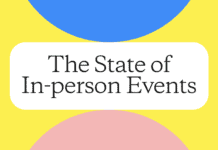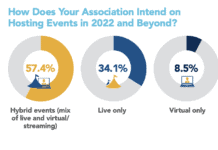
Even though the Trump administration’s travel ban is still being challenged by a federal court, it will have a profound effect on the number and types of business meetings held within the U.S. for the foreseeable future.
As such, meeting planners are looking into alternatives such as hybrid meetings.
Within days of the ban’s announcement in late January, conference organizers began scrambling to find alternative locations for their meetings outside of the U.S. Even if the ban is modified or relaxed, I think you will still see many would-be meeting attendees, whether traveling into the U.S. from overseas or U.S. residents traveling internationally, hold back on travel plans as they weigh the risks.
For some, an international trip might involve a frustrating delay at customs. But for others, it may mean being denied re-entry to the U.S. upon their return. There continues to be much uncertainty as to how the ban will be implemented, and under what circumstances.
Due to this uncertainty, I expect we’ll see many more international meetings and conferences held outside of the U.S. For international meetings held within the U.S., I think we’ll see fewer participants and speakers coming from other countries. Likewise, fewer U.S. residents may choose to make business trips overseas that are not absolutely necessary, especially those who emigrated here from other countries.
The upshot: More international meetings will be convened with some or all participants participating remotely. That is, we will see more “hybrid” meetings, with a critical mass of people in one location, with those from other locations participating remotely. As a meeting designer and facilitator, this kind of hybrid meeting can be really tough to pull off successfully, because there’s an inherently uneven playing field when many people are meeting in person, while others are connected remotely.
In fact, the idea of a hybrid meeting ever replacing face-to-face meetings is hard to imagine. It depends on the purpose of the meeting. If the meeting is mostly about relationship building, mobilizing and energizing a team, or building trust, this is much harder to do when some or all participants are remote. If, however, the chief purpose of the meeting is information sharing, brainstorming, action planning or decision-making, all of this can be done very well virtually, with careful planning.
With hybrid meetings on the rise, stay tuned for a future article on how to design and run a successful hybrid meeting.










